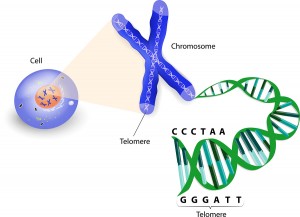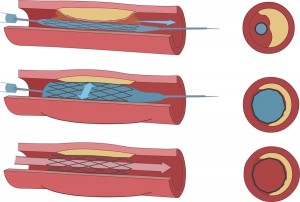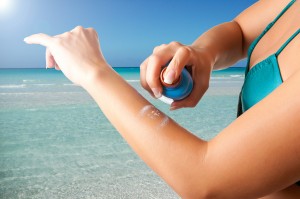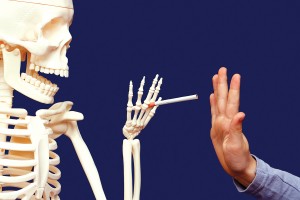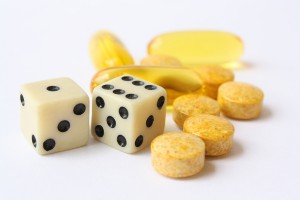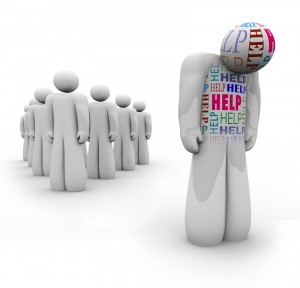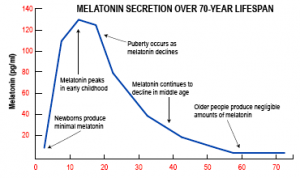Dr. Sandy Chang gave a talk at the 22nd Annual World Congress on Anti-Aging Medicine in Las Vegas Dec. 10-14, 2014 entitled “Telomere measurement as a diagnostic Test in cardiovascular and Age-related disease”, but a shorter title would be “telomere length a telltale sign of aging” (my choosing).
Dr. Chang pointed out that it is now well established that telomere length is directly related to health. The shorter the telomeres are the higher the probability to get the following: early menopause, infertility, diabetes, wrinkles, arthritis, osteoporosis, cardiovascular disease, Alzheimer’s, Parkinson’s, dementia, cancer, stress and a lack of stem cells. In this BMJ study from 2014 it was shown on a large population basis that shorter white blood cell telomeres lead to a higher risk of coronary heart disease causing heart attacks. Decreased telomere length is also associated with the development of breast cancer, cancer of the ovary and uterus, cancer of the prostate and skin cancer.
Because of these connections it makes sense to determine a person’s telomere length. If it is short, do check-ups more often to detect any cancer early when it can still be treated.
Telomere length measurements are now done in many infertility clinics as short telomeres both in the male and female is associated with infertility.
The newest finding and perhaps the most important is that a healthy lifestyle, vitamins and supplements can elongate telomeres while a poor lifestyle leads to shortening of telomeres.
Here are the factors that lead to shortening of telomeres:
– Chronic stress
– Poor diet and nutritional habits
– Chronic inflammatory diseases
– Metabolic disorders
– Lack of consistent exercise/sedentary lifestyle
– Obesity, high BMI and body fat
– Smoking
– Over consumption of alcohol
– Lack of sleep / insomnia
When short telomeres are detected, it is important for the physician to look at lifestyle changes to protect telomeres from decreasing their length even further. This has the potential of preventing dementia and Alzheimer’s when it comes to brain health. It can prevent osteoporosis and metabolic diseases (diabetes, metabolic syndrome). Telomerase is the buzzword today, which is an enzyme that all of our cells have. The purpose why we have telomerase in our cells seems to be helping us build up and repair telomeres. Any substance that preserves telomerase or prevents the breakdown of telomerase will prevent shortening of telomeres and will also prevent the above-mentioned diseases.
These supplements lead to lengthening of telomeres:
-Vitamin C and E
-Omega-3 and polyphenols
-Vitamin A and D3
-All of these help controlling oxidative stress, reduce DNA damage, reduce inflammation and build up telomere length.
-A good diet and nutrition (Mediterranean type diet) will prevent telomere shortening as well and also lead to telomere lengthening.
-T-65, an extract from astragalus has been shown in vitro to lengthen telomeres, but there is no publication yet about in vivo effects in humans.
-Resveratrol is useful to prevent shortening of telomeres as well.
-Exercise also is a simple means to prevent telomere shortening.
Another talk on telomeres was given by Dr. Harvey Bartnof with the title “Telomere Shortening and Modulation: Case Studies From The Clinic”.
This talk was a comprehensive review of what is known about telomeres, about the fact that many diseases are due to telomere shortening, about animal experiments, ways of how to lengthen telomeres and finally some data on human studies with regard to telomere lengthening.
In the following I will briefly review all of these areas that were discussed. Some of this material overlaps with Dr. Chang’s lecture.
What produces telomere shortening? Dr. Bartnof showed 4 slides that listed all of the conditions and diseases that are associated with telomere shortening. Telomere shortening is associated with twice the risk to die from a heart attack when compared to people with normal telomeres.
a) Known genetic conditions in humans associated with telomere shortening
There are three known genetic conditions due to telomere shortening: A premature aging syndrome, called dyskeratosis congenitalis; patients with this condition die prematurely from cancer, or from bone marrow failure.
People with Werner syndrome who have a genetic telomere loss have a mean life expectancy of only 54 years.
Idiopathic pulmonary fibrosis is another genetic condition with shortened telomeres due to mutations.
b) Telomere shortening associated with these health conditions
Professor Elizabeth Blackburn, PhD who is one of the three researchers who won the Nobel Prize in Physiology and Medicine for their work on telomeres in 2009 stated the following: “Telomere shortness is associated with just about all the major diseases of aging… from cardiovascular disease, death from cardiovascular disease, risks of cardiovascular disease, diabetes, diabetes risks such as insulin resistance, vascular dementia, to osteoarthritis.”
An enormous amount of clinical investigations have been done since in cohort groups like people with diabetes, high blood pressure, obesity and cancer.
There is natural shortening of telomeres due to the aging process. When we compare telomere length of body cells of a 20-year old and call this 100%, the telomeres of a 100-year old person are on average only 40%. A study from the Karolinska Institute found in a group of matching twins where one twin had shortened telomeres, this twin had a 2.8 times greater risk of death than the twin with normal telomere length.
However, as already mentioned a number of other factors can lead to shorter telomeres like chronic stress in workers who look after Alzheimer patients, being of the Caucasian race (compared to African-American), having had less education, chronic unemployment, depression, pessimism, single people versus married people, phobic anxiety in women and hostility in men, poor sleep and too little sleep, migraine headaches in women, low physical activity, smoking cigarettes and alcohol consumption. The list does not stop here. Other conditions are associated with telomere shortening like heroin abuse, exposure to smog, polycyclic aromatic hydrocarbons and lead, cardiovascular disease, diabetes, cancers, osteoporosis, osteoarthritis, rheumatoid arthritis, cirrhosis of the liver, inflammatory bowel disease, chronic obstructive lung disease, Alzheimer’s disease, Parkinson’s disease, chronic kidney disease and disability in the elderly.
c) Effects of medications on telomere length
Antidepressants used against depression have a telomere lengthening effect, but NSAID’s, aspirin and interferon-alpha shorten telomeres. Other telomere shortening effects come from cancer chemotherapy.
d) Telomerase activation elongates telomeres
Successful experiments in various mouse strains showed that special strains that were telomerase deficient, could be reconstituted to normal by reinserting telomerase: atrophied organs regrew back to normal size and function. In humans it was shown that increased physical activity elongated telomeres, so did vitamin C, E and vitamin D3 supplementation, resveratrol, a Mediterranean diet, marine omega-3 fatty acid supplementation, higher fiber intake, bioidentical estrogen in women and testosterone in men, relaxation techniques like yoga and meditation. The Astragalus-derived telomerase activator TA-65 has been shown in animal experiments to elongate telomeres. The human data about TA-65 is still spotty or not available (it is also very expensive and may be unnecessary given the fact that so many other agents are known to lengthen telomeres).
e) Human data on telomere lengthening
Much can be achieved by changing one’s lifestyle: cut out toxins like cigarette smoking and alcohol abuse. Get involved in a regular exercise program, which has been shown to increase HDL cholesterol and to elongate telomeres. Adopt a Mediterranean type diet including olive oil; take vitamin E, D, C and supplements with resveratrol and murine omega-3 fatty acids, all of which elongate telomeres. Get enough sleep (7 to 8 hours per night) and do yoga and meditation. Avoid distress and tone down your stress level to eustress (normal stress level associated with every day living). An older person should use bioidentical hormones to replace missing hormones. All of this taken together will create a milieu in your body where telomeres get elongated and you live longer without disease. Several clinical conditions were mentioned where baseline telomere length was assessed initially and was found to be too short; simple lifestyle changes were then initiated, which were able to improve telomere length and treat these diseases successfully. In addition TA-65 (also termed T-65) was given in some of these cases, but in a subsequent discussion Dr. Bartnof admitted that he could not comment on how effective TA-65 by itself was as it was only one component of many other effective telomerase stimulators given. Till further research is out on this substance, it may be just very costly without spectacular benefits on its own.
Conclusion
I gave a summary of the talks by Dr. Chang and Dr. Bartnof regarding telomeres, but these were not the only talks about telomeres, although quite representative for the others. Both speakers pointed out how powerful lifestyle is for our body functions as this is what lengthens our telomeres and allows us to live longer, disease-free lives. Stem cells also have telomeres, but they are on average longer than the rest of the body cells (called somatic dells). An improved lifestyle will keep our stem cells in good shape, so they are there when needed to replace aging somatic cells.
The new logic of a healthy lifestyle is:
A healthy lifestyle causes healthy telomeres of somatic cells and of stem cells; this causes health until a ripe old age. In the next few weeks I will blog about more topics from the 22nd Anti-Aging Conference in Las Vegas. Stay tuned.
